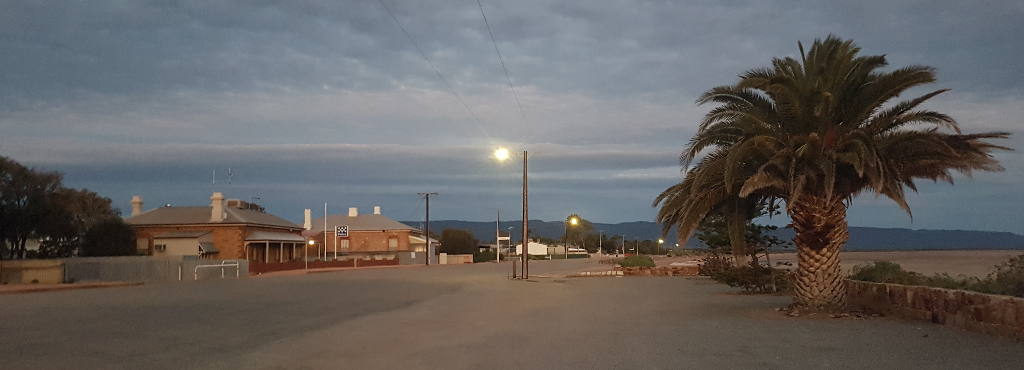
Interesting Facts about Port Germein
Port Germein was a thriving Port in the 1800s and bags of grain were loaded onto sailing ships and sent to ports all over the world. Construction of the jetty started in 1880 and was completed in June 1881. By 1883 the Jetty had been extended by 400ft making it 5495ft and was one of the longest Jetties in the Southern Hemisphere. Today, at 5459ft long Port Germein Jetty is still the longest wooden Jetty in the Southern Hemisphere.
The Jetty has been damaged and repaired many times. In 1953 it was damaged by a storm and repaired in 1958, it was also damaged by large storms in May and September 2016 and later repaired. As it has been placed on the National Trust Recorded list and the State Heritage List in 1985 it must be repaired in traditional wood manner.
From the early days, the Jetty has played a vital role in the lives of the residents of Port Germein and the Southern Flinders. As its trading importance waned during the latter half of the 21st Century, its role as a recreation area has assumed growing importance. Families have built holiday shacks, fishermen, crabbers, swimmers and picknickers have come to rely on the Jetty as being the centre of their activities.
Port Germein is also well known for Blue Swimmer Crabs, as a general rule of thumb, crabs are usually caught in local shallow waters during the months that contain the letter ‘R’ (September through to April). The Jetty and sand flats are a great place to try your hand at catching crabs and the Caravan Park offers crab cooking facilities.
To further acknowledge the maritime heritage of the town, many of Port Germein’s streets were renamed after the ketches and windjammers, which frequented our jetty.
There are:
Kobenhaven Street
Favel Street
Winterhude Street
Rydberg Street
Karpfanger Street
Ponape Street
Olivebank Street
Baudin Street
Archibald Street
Killoran Street
Mozart Street
Pedersen Street
A walk along the Esplanade will take you to bollards at the end of each street which tell you more about each of these ships.